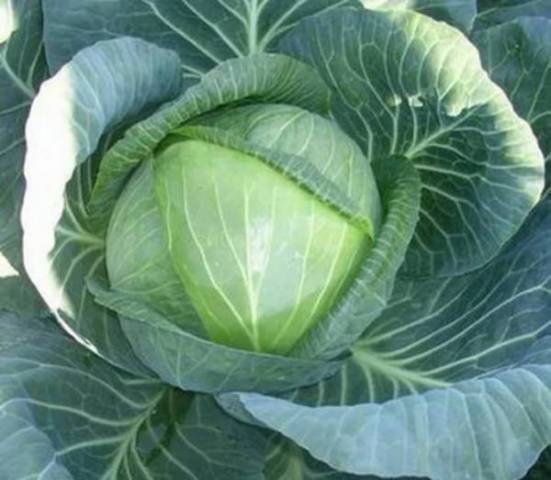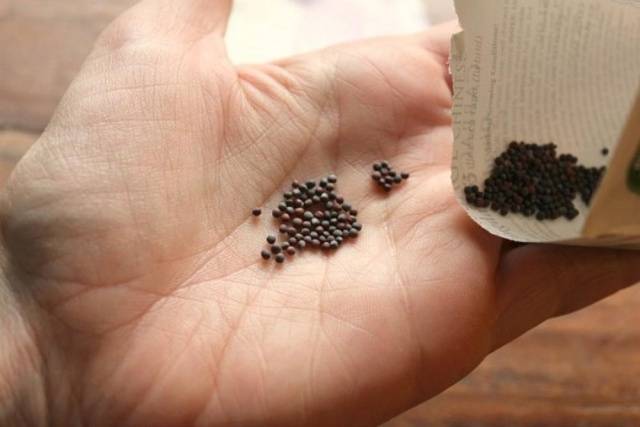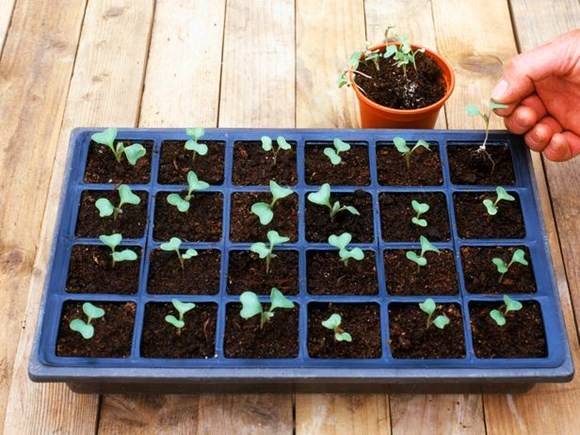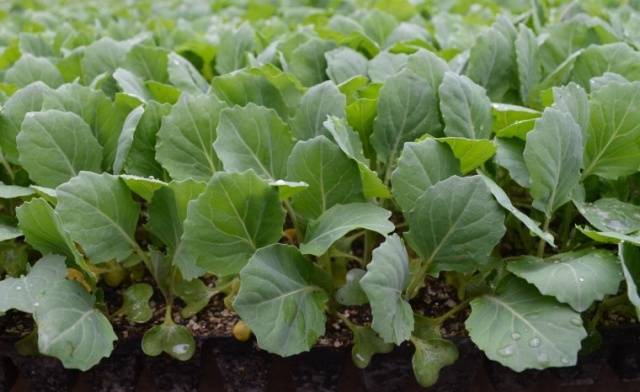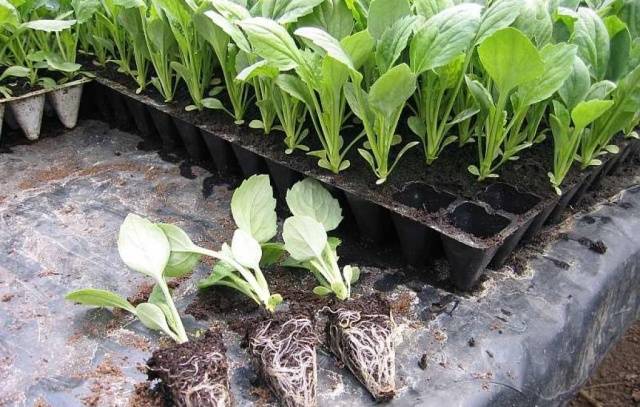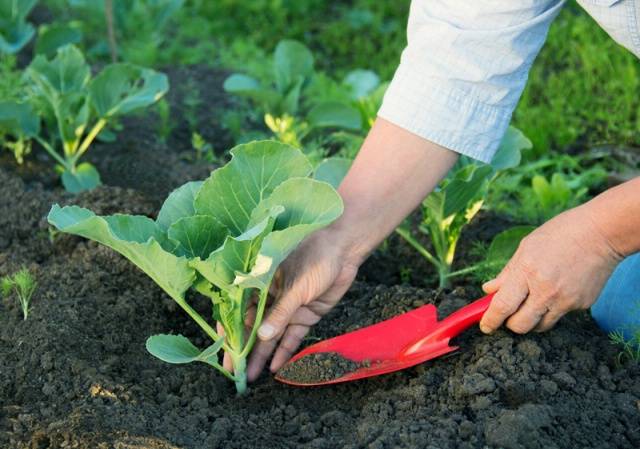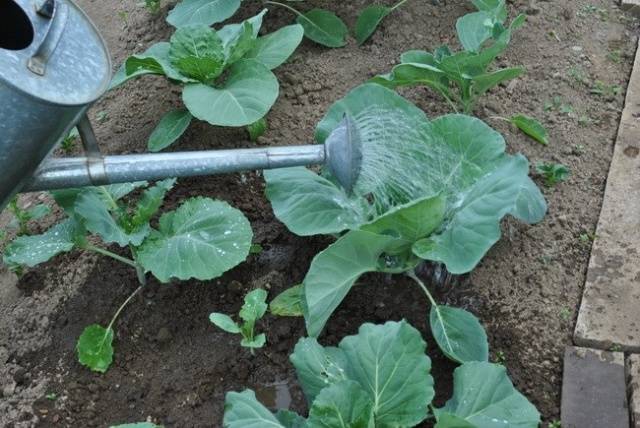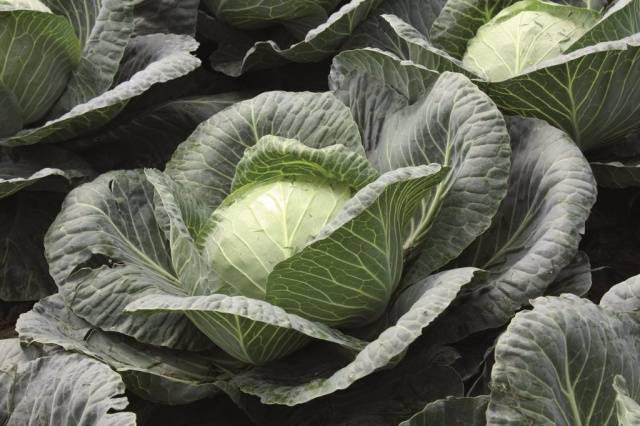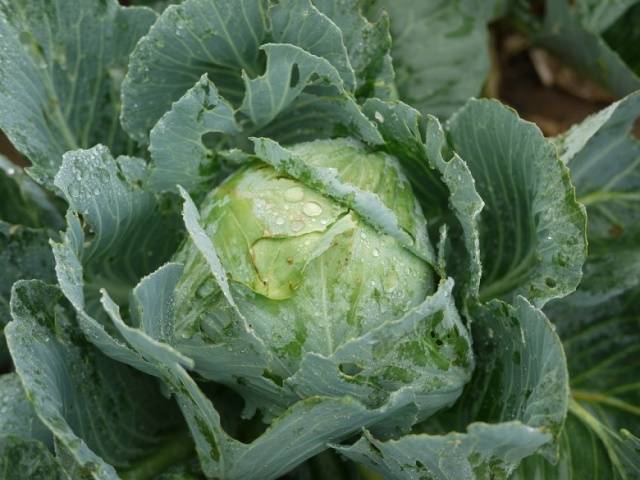Content
Rinda cabbage was bred by Dutch scientists, but it became widespread in Russia. The variety has a good taste, high yield and undemanding care.
The Rinda variety is grown by the seedling method. First, young plants are formed, which, when warm weather is established, are transferred to open ground.
Variety characteristics
According to the description of the variety and reviews, Rinda cabbage has the following features:
- white mid-season hybrid;
- the ripening period is 75-90 days after planting the seeds;
- heads of cabbage weight from 3 to 7 kg;
- storage period - 4 months;
- small stump;
- dense light green leaves of heads of cabbage;
- delicate taste.
Rinda cabbage tolerates transportation well. Heads of cabbage ripen together, which allows you to quickly harvest.
The variety is distinguished by its unpretentiousness, resistance to diseases and pests. Heads of cabbage are eaten fresh, homemade preparations are obtained from them by pickling, sourdough and salting.
Rinda grapes are harvested in a cool, dry place. A basement or cellar is suitable for this. Dusting with chalk and wrapping in paper helps to protect the heads of cabbage from mold and rot.
Landing order
In Russian conditions, Rinda cabbage is grown by the seedling method. First, the seeds are planted at home. When the plants grow up, they are transferred to an open area.
Soil and seed preparation
High-quality seeds are required to form seedlings. It is better to buy them in specialized centers.
A light substrate with a good ability to pass water and air is prepared for seedlings. The soil mixture is obtained by combining the following components:
- sod land (1 part);
- humus, vermicompost or peat (2 parts);
- perlite, sawdust, river sand to make the soil loose (1 part).
The resulting soil must be processed. To do this, it is placed in a freezer or heated microwave oven. Another method of treatment is watering with Fitosporin solution, which has disinfecting properties.
Then they move on to the preparation of planting material. If the seeds are painted in a bright color, then they have already been processed by the manufacturer and are completely ready for planting.
Uncolored seeds should be warmed up in hot water at a temperature of 50 degrees. After half an hour, the material is immersed in cold water for 5 minutes. The processed seeds need to be dried and then used for planting.
Getting seedlings
The prepared soil is filled with containers, the size of which depends on the method of growing cabbage.
If you plan to carry out a pick, then it is better to use boxes. Earth is poured into them, after which holes are made 1 cm deep. The seeds are placed at a distance of 2 cm. Rows are formed every 3 cm from each other.
Without picking, the Rinda variety is planted in cups 10 cm deep. 2 seeds are planted in each container. After their germination, a stronger plant is left.
The containers must have holes. After planting the seeds, you need to sprinkle them with earth and water the plantings well. The containers are transferred to a warm place until sprouting.
Containers with seedlings are rearranged on the windowsill and kept at a temperature of no more than 8 degrees. Water the seedlings as the soil dries.
After a week, the ambient temperature is raised to 16 degrees by turning on the radiator. Excess heat is harmful to cabbage seedlings, so you need to monitor temperature changes.
If the Rinda variety is planted in boxes, then two weeks after the emergence of seedlings they are transferred to separate containers.
Landing on the beds
The Rinda cabbage variety is planted in open ground after 4-6 leaves appear in the seedlings. Its height is 15-20 cm. Work is carried out from late May to mid-June.
A couple of weeks before the start of work, the cabbage is left in the open air. At first, 2-3 hours are enough for hardening, gradually this period is increased. Before planting, the cabbage should be in an open place all day.
For cabbage, beds are prepared, which are illuminated by the sun throughout the day. Mid-season varieties prefer loamy or clayey soil. Do not use for planting the Rinda variety of beds where radishes, radishes, mustard, turnips, rutabagas or any varieties of cabbage previously grew.
Dig up the soil under the cabbage in the fall. In the spring, after the snow melts, its surface is leveled with a rake. Cabbage does not tolerate acidic soils. The addition of dolomite flour will help reduce acidity.
The Rinda variety is placed in holes located every 30 cm. With a denser planting, the plants will not have enough space for full development.
One handful of peat and sand, two handfuls of humus and wood ash are placed in each hole. Seedlings are transferred to the holes along with an earthen clod. After planting, the cabbage is watered abundantly.
Care features
Rinda F1 cabbage needs care, which involves the introduction of moisture and nutrients. The variety is especially sensitive to watering. Seedlings must be fed with minerals. After planting it in the ground, fertilization continues.
Watering cabbage
The Rinda variety is picky about watering. Cabbage needs a lot of moisture, which it receives from natural precipitation and by introducing moisture.
Cabbage plantings are watered in the evening. In dry weather, watering is done every 3 days. After the procedure, you need to loosen the soil and huddle the plants. A mulching layer of peat will help maintain a high level of moisture.
Cold water from a hose is not used for irrigation. It provokes the development of diseases and slows down the development of cabbage. The water should settle and warm up.
Top dressing
Top dressing of cabbage Rinda varieties are performed at the seedling stage. For this, a fertilizer is prepared, consisting of a mixture of components:
- potassium sulphide - 2 g;
- superphosphate - 4 g;
- ammonium nitrate - 2 g.
The substances are dissolved in 1 liter of water and the seedlings are watered. To prevent plant burns, you first need to water the soil with plain water. After 2 weeks, feeding is repeated, but the dose of substances is doubled.
Due to the content of potassium and phosphorus in the fertilizer, the survival rate of cabbage will improve. In the future, during the season, cabbage needs two more additional dressings.
The first treatment is carried out when active growth of the leaves begins. Add 10 g of ammonium nitrate to 10 liters of water. The prepared product is enough for watering 5 plants.
When forming a head of cabbage, a complex feeding is prepared. Use for a bucket of water:
- potassium sulfate - 8 g;
- superphosphate - 10 g;
- urea - 4 g.
Pest control
The main pests of cabbage are slugs, caterpillars and aphids. Immediately after transferring the cabbage to an open area, it is powdered with ash, to which tobacco dust is added.
Against caterpillars and aphids, an infusion of tomato tops is prepared: 2 kg per 5 liters of water. A day later, an infusion is obtained, which must be boiled for 3 hours. The resulting product is diluted with water in a 1: 2 ratio.
Mint, marigolds, sage, cilantro and other spices are planted next to cabbage beds. The astringent aroma of such herbs scares away aphids, butterflies and slugs and attracts beneficial insects: lacewings and ladybirds.
Gardeners reviews
Conclusion
The Rinda variety is one of the most popular varieties among gardeners. It is chosen if you need to get a good harvest of cabbage with minimal maintenance. First, seedlings are obtained at home. Planting must be watered, fertilized and protected from pests.
Cabbage heads are formed even and large, they are used to prepare snacks, first and second courses. The variety can be grown for salting and pickling.
